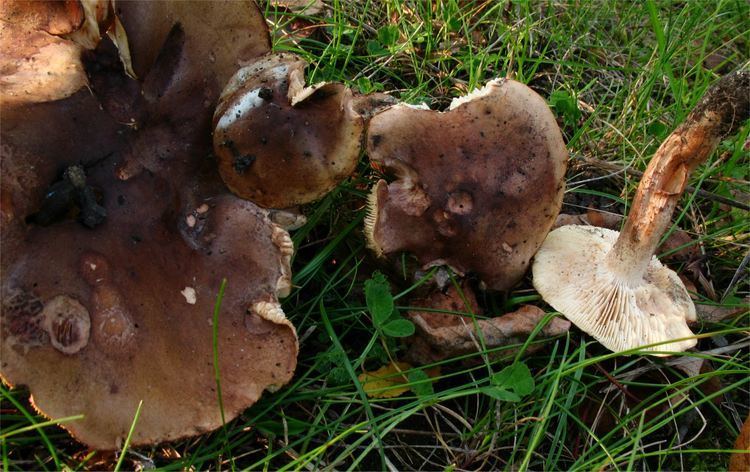Kingdom Fungi Class Agaricomycetes | Division Basidiomycota Order Agaricales Rank Species | |
 | ||
Similar Tricholoma, Tricholoma acerbum, Tricholoma sulphurescens, Tricholoma pessundatum, Tricholoma ustale | ||
Tricholoma ustaloides is a species of mushroom in the large genus Tricholoma. It has a widespread distribution in Europe, where it is typically found in association with oak and beech trees. Although generally considered inedible, it is consumed by some in Mexico.
Contents
Tricholoma ustaloides
Description
The cap is red-brown or chestnut-brown with a paler margin, very sticky when moist, and has a diameter of 4 to 8 cm (1.6 to 3.1 in). The overall shape of the cap is bell-like when young, later flattening to a more irregular convex shape in maturity, and often developing a lobed appearance. The margins of the caps are usually turned inwards. The gills are crowded together, adnate or emarginate in attachment to the stipe, and white or a light ochraceous yellow with dark brown stains when old or bruised. The stipe is 4 to 10 cm (1.6 to 3.9 in) long by 1 to 2 cm (0.4 to 0.8 in) thick, roughly spindle-shaped (fusiform), with red-brown fibrils and a sharply defined zone of white color at the stalk apex, especially in more mature specimens. The flesh is white or cream, smelling strongly of meal, with a bitter taste.
Spores have a roughly spherical or ellipsoid shape, are hyaline, smooth, non-amyloid, and have dimensions of 5.5—7.0 x 4.5—5.5 µm. Basidia are 4-spored and cystidia are absent.
Habitat and distribution
This mycorrhizal species typically grows in small groups, and is often found near trees in the genera Quercus and Fagus.
Although relatively rare, it has a widespread distribution in Europe, limited by the presence of its preferred tree hosts. Its first recorded appearance in Mexico was 1984.
Edibility
Despite its inedible status by some sources, Tricholoma ustaloides is consumed by the inhabitants of Ajusco and Topilejo, communities near Mexico City.
